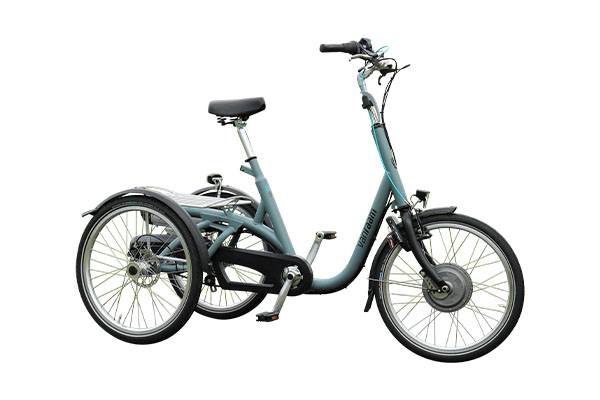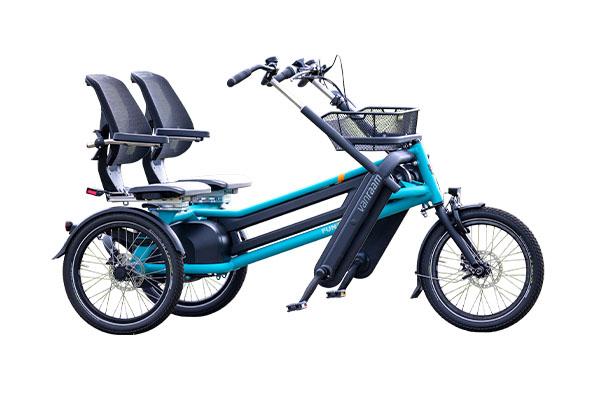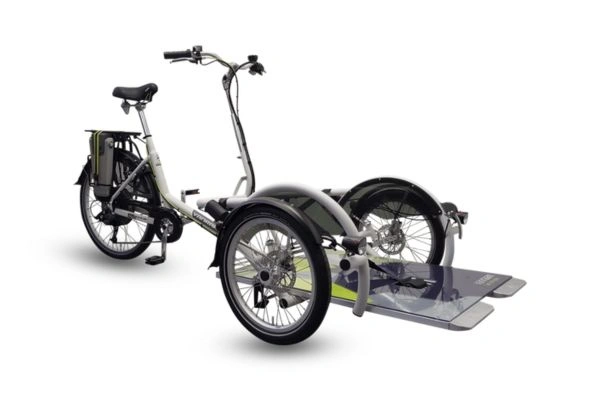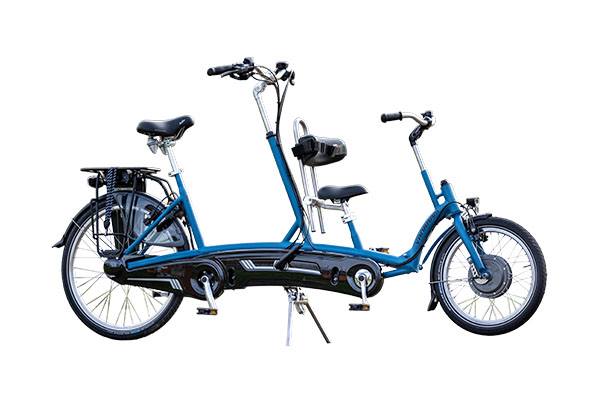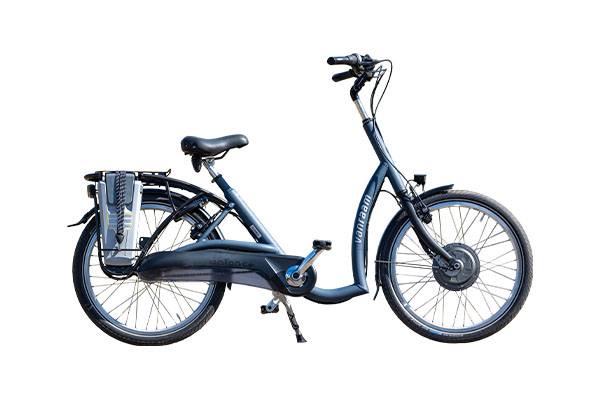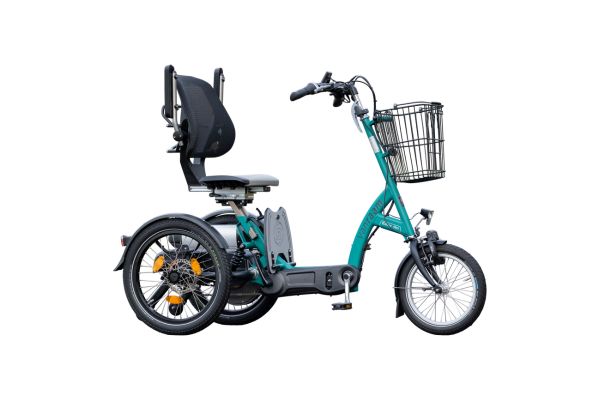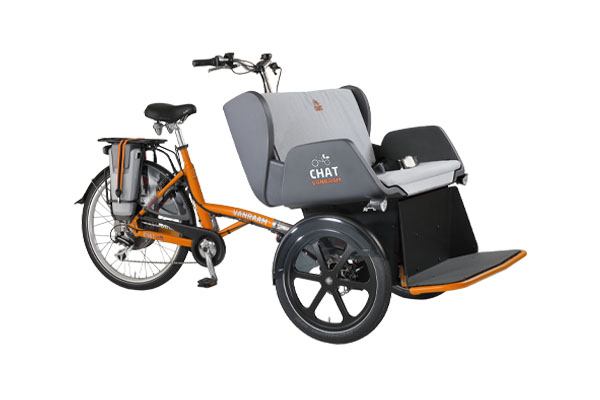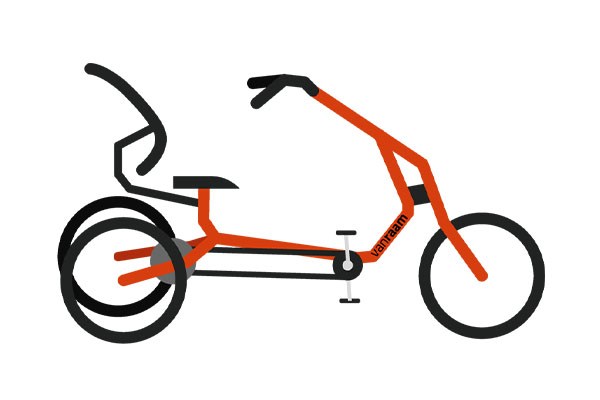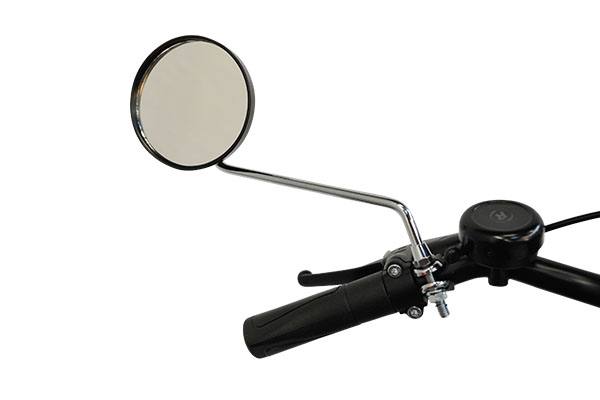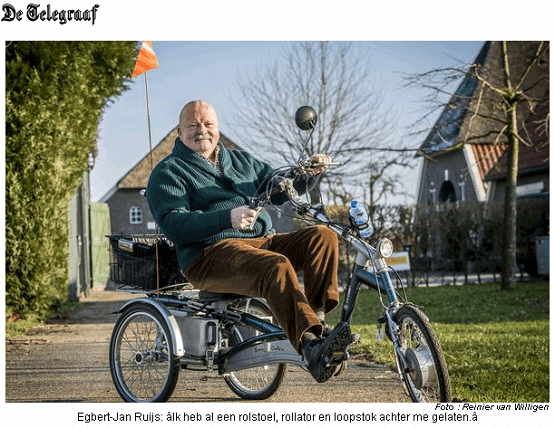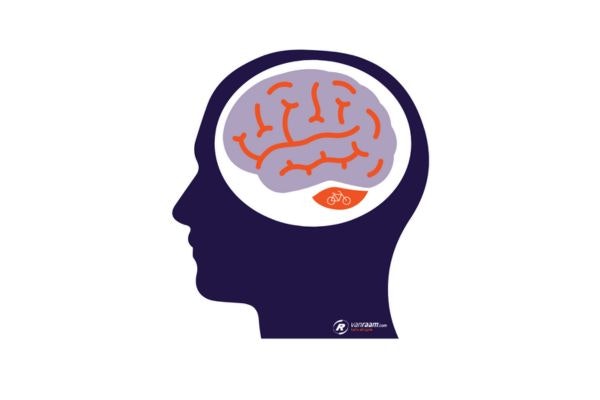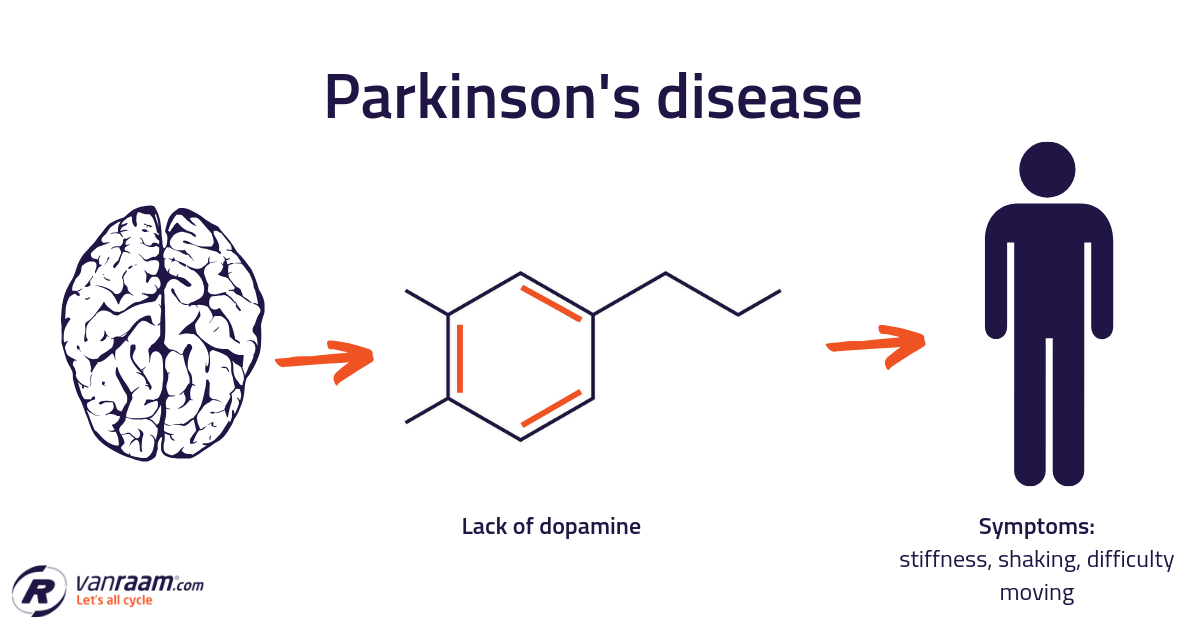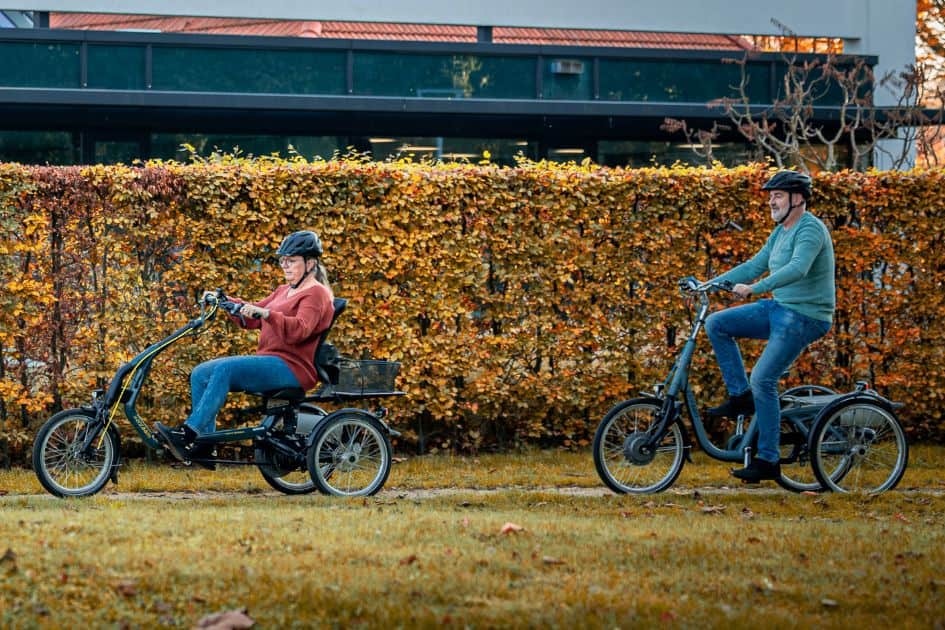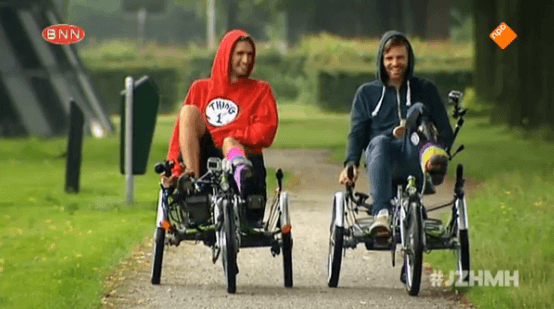Cycling with a brain disorder
Nearly 1 in 6 of world’s population suffer from neurological disorders, according to a UN report. Neurological disorders are, for example, Alzheimer and Parkinson disease, strokes, multiple sclerosis and brain injuries, depression, autism and neuroinfections. All these disorders have a major impact on the patient's life. Where people used to be mobile and independent, it is sometimes difficult to accept that walking around with the dog is sometimes no longer possible. At Van Raam, we work every day on the mobility of our fellow human beings, and we ensure that people with a disability can stay mobile and independently for as long as possible. We also do this for people with a brain disorder. It is therefore good to hear that people with a brain disorder can still remain mobile, because of our special needs bicycles. In this article you can find more information about what we can do for people with a brain disorder.
